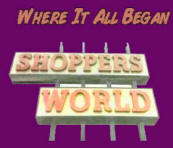




The General Cinema Story
The arrival of the megaplex is the latest chapter in General Cinema's story.
To learn how General Cinema became a leading national theatre company, we
need to return to 1922, the silent film period, when Philip Smith operated
his first movie theatre. At that time, Smith's dream may have been to open
another theatre someday, but few except for himself would have envisioned
his business as it is today. General Cinema Theatres, the company to grow
out of Smith's modest beginnings, now has become one of the nation's leading
exhibitors of motion pictures.
In The Beginning...
Let's rewind the film to 1935. With the transformation of America into an
automotive culture, Smith opened what is said to be the first successful
drive-in theatre in the United States. More drive-in theatres quickly
followed, including one built by Smith in the '40s in La Grange, Illinois.
Moviegoers could now watch their silver-screen idols in the privacy of their
cars. Because of the oversized screen and advanced speaker system, some
drive-ins could accommodate as many as 2,000 cars per show. While many
teenagers saw it as the perfect date, parents with young children
appreciated the convenience and small expense of the drive-in. As the
drive-ins prospered so did the Company, known at that time as Midwest
Drive-In.
Location, Location, Location.
By the early 1950s, however, Smith had anticipated a back-to-indoor-theatre
trend. This time, he stayed ahead of the competition not with a
revolutionary concept, but with a revolutionary location -- suburban
shopping centers. With the soldiers back from World War II and the economy
flourishing, most Americans were buying homes in the suburbs. Since all that
buying power was also shifting to the suburbs, shopping malls began
springing up in the suburbs. Smith seized this opportunity to capture a new
market by operating the first shopping-center theatre, the Framingham Cinema
in Framingham, Massachusetts.
Built in 1951, not only was Framingham's location a unique concept, but the
theatre's design was also new, replacing the impressive but impractical
palace-type theatres located in urban areas, which were too large to fill,
difficult to heat and cool, and expensive to maintain. General Cinema still
operates the Framingham theatre, only today it's a 16-screen megaplex.
A Box Office Hit!
General Cinema's practical theatre design, plus its innovative location, was
a hit! In their shopping-center locations, patrons were now able to combine
a trip to the movies with shopping or dining at a nearby restaurant.
Responding to this success, the Company built several similar cinemas in
shopping centers across the country. They proved to be equally as popular,
and by 1970 General Cinema was the largest shopping-center theatre operator
in the United States. When General Cinema introduced multiple-screen
theatres at one location, giving moviegoers a selection of films to choose
from, business improved even more.
Expanding Horizons.
It wasn't until the late 1950s, with the exhibition business thriving, that
General Cinema stepped outside of the motion picture business to broaden its
operations. The first non-theatre venture began with a series of restaurants
called Richard's Drive-Ins and coffee shops named Amy Joy's Pancake Houses.
By 1960, with the country's increasing enthusiasm toward bowling, General
Cinema added this sport to its growing repertoire of leisure-time
activities. 1960 also marked the year the Company went public with a listing
on the New York Stock Exchange as General Drive-In. In 1964, with the
Company continuing to expand its business interests, the name was changed to
General Cinema Corporation.
Over the years, General Cinema has diversified into many different
businesses, including becoming the nation's largest Pepsi bottler and
purchasing The Neiman Marcus Group, a group of specialty retail stores, and
Harcourt Brace Jovanovich, a renowned publishing company. (General Cinema
was spun off from Harcourt General into a separate company in 1993.)
However, no matter how diverse its array of investments has become, General
Cinema has never lost its focus on the movies.
General Cinema Today.
Throughout the years, General Cinema has continued to focus on growing its
theatre business as areas of potential expansion. General Cinema now builds
state-of-the-art megaplexes, featuring large screens, digital sound,
stadium- and theatre-style seating and "love seats" for moviegoers' pleasure
and comfort.
The company also formed a joint venture with Hoyts and now has theatre
operations throughout South America.
In April, 1998, at the Yorktown 18 theatre in Lombard, Illinois, General
Cinema opened the country's first Premium Cinema, a luxury movie theatre
featuring valet parking, a bistro lounge serving champagne, wine and gourmet
appetizers and entrees, and an auditorium with all the comforts of a private
Hollywood screening room. It now has upscale cinemas in Washington, D.C. and
Boston.
As General Cinema continues to break new ground, the Company's objective
remains the same as it was over 75 years ago: to provide the ultimate
movie-going experience.





Copyright
GeneralCinemaTheatres.com





![]()

